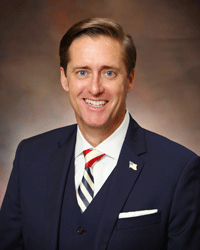
Fixing Holley by the Sea’s flooding problems will take $86 million worth of drainage projects, according to a recent study.
County engineering consultant Baskerville Donovan presented results from the study, begun in 2013, at Monday’s Commission meeting.
Engineers looked at 350 streets, 650 intersections, 8100 acres, 10,000 homes and businesses, and 9 primary drainage basins.
They inventoried existing infrastructure like pipes and ditches and gathered questionnaires from the community.
“This included really every pipe that you have out under the road that carries water from one area to another,” engineer Ryan Weed noted.
The results were compiled on a topographic map that includes infrastructure, major drainage patterns and problem areas. That blueprint will be used to plan corrective projects.
Because water paths throughout the area are interconnected, projects must be prioritized “downstream-up,” engineers emphasized, to avoid making existing problems worse. They provided a list of suggested projects. Some can be implemented immediately while others will require upstream problems be fixed first.
HBTS was slow to develop until the late 1990s, but developable land is now mostly built out, the report said.
Many of the worst flood areas are wetlands that cannot be developed on.
“However, that does then affect the rest of Holley by the Sea,” Weed noted.
The firm is looking at ways to improve drainage, starting with infrastructure lines.
“We’re going to have to make improvements to the existing drainage system,” Weed noted. “That’s just for the sake of getting water out of the area.”
The company also looked for new outfall paths to route water.
Many north-south roads in the west part of HBTS carry water to Tom King Bayou and are subject to flooding, Weed said.
Top ranked project suggestions include Tom King Bayou channel restorations, West Williams Creek Channel restoration and Palmetto Drive’s drainage system.
“You start trying to figure out which projects you’re going to recommend we do first, many of them…are going to be dependent on doing something else somewhere else. So everything’s going to be tied together and it’s going to be difficult to say ‘we’re going to do this project’ unless you look at the impact coming from someplace else,” Commissioner Don Salter remarked.
Some of the problems may have been avoidable.
Drainage ditches have not been maintained, sewer extensions are necessary throughout out HBTS and some of the lots that could be used for drainage were sold to developers to build on, Navarre resident Gerald Gallup told the Board.
“At some point don’t we have to just say that there’s too much building going on in a certain area and the land can’t take care of all the drainage?” Navarre resident Sandra Cantu remarked.
Substituting closed culverts with pipe drainage instead of open swales may also worsen flooding.
“Typically a ditch along a road is going to carry more water than a pipe,” Weed noted.
Consultants said septic tanks don’t add to drainage problems.
The next step is to evaluate projects and funding priorities, Commissioners said.
Most of the flooded houses are in areas that need other projects completed first, according to BD.
The study was underway during the major April 2014 storm, but BD representative Jim Waite said study recommendations, even if already implemented, wouldn’t have prevented the flooding from that “100 year flood” event.
“You prepare for that like you would a Category 5 hurricane,” Waite remarked. “It’s not something you design to.”
Over 160 of the questionnaires were returned, some showing road, home and business flooding and standing water in yards.
“Almost to the questionnaire, people mentioned yard flooding and street flooding. In fact when we put it on the map it covered almost every road,” Weed noted.
About a dozen responses also indicated home flooding.
Looking at this makes me glad I’m a commissioner in the north part of the County,” Commissioner Bob Cole quipped, noting “it’s really nothing to laugh about.”
Cole suggested projects addressing flooded houses and residents whose escape in an emergency are impeded take priority over flooded yards.
“I’m concerned with the people that have water in their house…and people who would be unable to get away from their home in case of an emergency, or emergency management couldn’t get to those people. And categorize the fixes from there.”
Commissioner Rob Williamson asked for a list of projects that could be implemented in the next five years.
“I understand Commissioner Cole’s comments about flooding in the home versus flooding in the yard, but I would argue if it’s flooding in your yard and your investment, it’s pretty important to you,” Williamson remarked.
“And there is evidence that these flooding events, for there to be negative impacts in HBTS or in areas of South Santa Rosa County, it doesn’t take a flooding event anymore. It just takes a good thunderstorm, or when we have those rain periods in the springtime. So as we continue to grow and have that development, it’s becoming more prevalent.”
Williamson recommended the County place information on the website to keep residents updated.
“To me this is a living, breathing document, but we’re not going to come up with $80 million any time soon,” he noted.
“There’s no quick fix for any of this, but over time we’ll be able to make improvements to the quality of life for people down there who are experiencing [flooding],” Commissioner Lane Lynchard remarked.





































